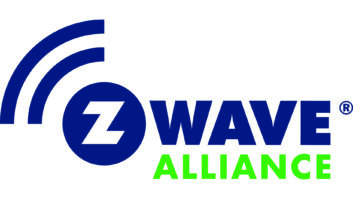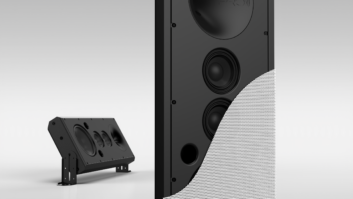NEW YORK – Sales momentum in the systems-integration channel continued to build in 2013, lifting the spirits of many electronic systems contractors (ESCs) headed to Denver for the Sept. 25-28 CEDIA Expo.
The show is expected to attract more than 415 exhibitors, more than 90 of which are new exhibitors, up from a 2012 new-exhibitor count of 90.
Channel sales are up in both the new-home-construction and existing-home segments, thanks to rising consumer confidence, new technology that reduces the price of whole-house audio and home automation, and a greater installer focus on upgrading wired and wireless networks to accommodate all of the content and data signals that ride over a home network, marketers told TWICE.
Some growth is also attributable to rising – but still historically low — single-family housing starts, which grew 20.1 percent for the year through August following 2012 growth of 24.3 percent to 535,300, Census Bureau statistics show. That’s still well below the 2005 peak of 1,715,800, but new-home starts are “icing on the cake,” said Dave Workman, ProSource president/CEO.
A more significant contributor to growth is the retrofit and home-renovation segments, which are rising because consumer confidence is up and home values are again rising, said Workman and AVAD VP/ GM Jim Annes.
“Existing home owners are finally reinvesting in their homes,” said Workman “They have the confidence to spend on home renovations and retrofit installs because their home values are rising again.”
Installs in existing homes are also getting a boost from investors buying and upgrading existing single-family homes to rent out, Workman said. The practice of investors buying homes to rent out will continue “for a long time” because of slow wage growth, the unemployment rate, and stiffer mortgage-lending requirements, he said.
Workman and AVAD’s Annes say that the channel is growing faster in 2013 than it did in 2012, as does a CEDIA benchmark survey that found responding contractors reported 2012 volume up 10 percent and expected 2013 growth of 18 percent.
Workman said ProSource dealers involved in custom are reporting 10 to 15 percent channel growth in 2013, up from 2012’s “good single-digit growth,” lower single-digit growth in 2011, and still-lower growth in 2010. “It seems to be hitting its stride this year,” Workman said.
Annes sees growth driven by a confluence of consumer confidence, technology changes, and contractors’ willingness to change sales philosophies to reflect the realities of drastically changed technology.
In this new environment, installers who market the right solutions could be growing 10 percent this year, while other are posting growth commensurate with GDP growth or posting sales declines, said Annes. “Some people out there are struggling,” he said.
Channel growth accelerated this year, he said, because “technology is becoming more accessible” to consumers who are now “saddled with less debt” and are more confident. Technological changes have “created a new class of customers” for whom home technology is within reach and for whom awareness of multi-room audio and other automation systems has grown, he said.
To this latest generation of customers who “understand that they can take their music anywhere,” multi-room audio “seems more achievable” now that 10 zones of audio no longer require a central stack of components with multiple amps and holes in walls, he said.
Technology evolution has produced “new ways to put product together to create new solutions,” he said. Dealers who are more successful “walk into a home and don’t look at the number of TVs they could sell but the number of screens, such as tablets, phones, PCs and [dedicated home automation] control screens and ask how many more they can add to create the most value for the consumer.”
These dealers also find “the hidden opportunities,” such as replacing a thermostat with a smart thermostat controllable from a smartphone or tablet, or one that locks out changes if a lot of kids are home during the day, he said.
Growing contractors have also made the philosophical shift to no longer pressure consumers to put all their content on a single centralized server, Annes said. They “now let people access content no matter where it lives,” whether on mobile devices, PCs, or in the cloud, he explained.
ProSource’s Workman also sees new technology contributing to channel growth.
“Home automation has become more mainstream and affordable,” Workman said, thanks to such developments as door locks controlled via wireless, wireless lighting-control systems and smart thermostats.
Although “wireless is helping the retrofit business, there are still a lot of wires being run [in retrofit installs, not just home renovations]” for such things as control systems, he noted.
Another growth segment is the replacement of existing lighting-control systems that can’t dim LED lights to systems that can, he said.
Wireless networking is also contributing to channel growth, Workman said. Installers are evaluating a home’s wireless network for its capabilities to move around content, and for large homes, “it might require more than a wireless extender to include commercial-grade wireless routers,” he explained.
Successful dealers have made deep dives into networking because all types of home systems and A/V equipment now connect to a home network, wired or wireless, AVAD’s Annes said.
Commercial-grade networking products have “created a strong opportunity to add value” by creating networks that are more reliable and deliver better performance than store-bought wired and wireless routers, Annes explained.
Home-automation sales are strong, he noted, in large part because more and more automation products incorporate wireless — via Wi-Fi or proprietary technologies – to make it easier to connect devices to one another.
The integrator base is more in tune with how all devices play together, and manufacturers “have opened up their devices to play better together,” Annes said.
Wireless control of home-automation systems through tablets and smartphones is also driving home-automation sales by making home control more accessible, Annes said, though home-automation systems still should include a dedicated remote control and in-wall controller, he said.
“Manufacturers are opening up their systems to tablet access,” Annes said, bringing down pricing and making the systems more attractive because “people are comfortable with tablets.”
Although TV sales are down in dollars for the industry, the TV business is growing in units and dollars for integrators who pursue higher performance 46-inch and larger models that “tend to have more capabilities to integrate with online services,” Annes said.
For his part, Steven Rissi, CEDIA’s technical projects manager, sees dimmable LED lighting systems, robust wireless-network gear, high-performance audio, and motorized window-shade systems as key growth segments that integrators can tap to compensate for the collapse in HDTV prices over the past decade.













